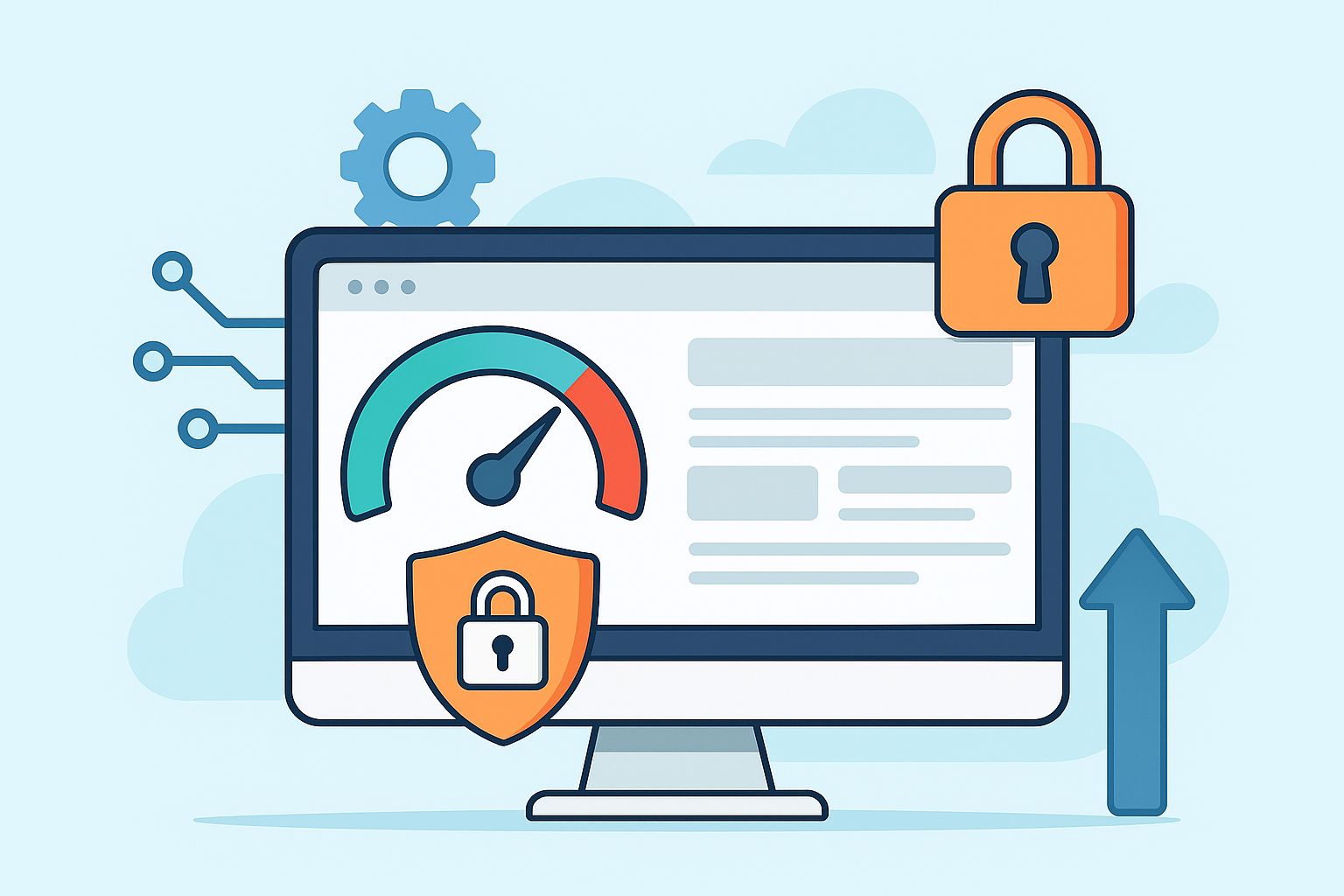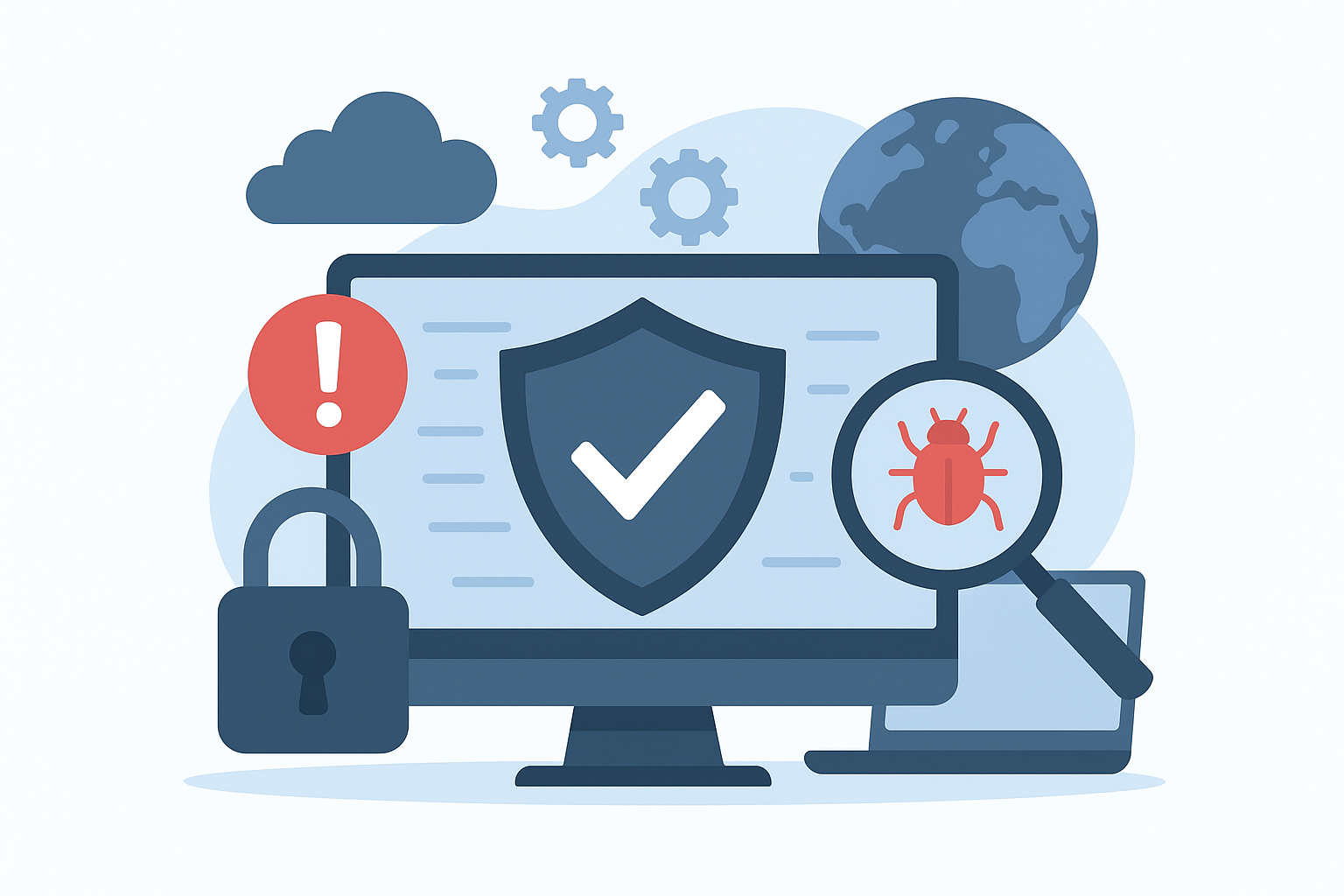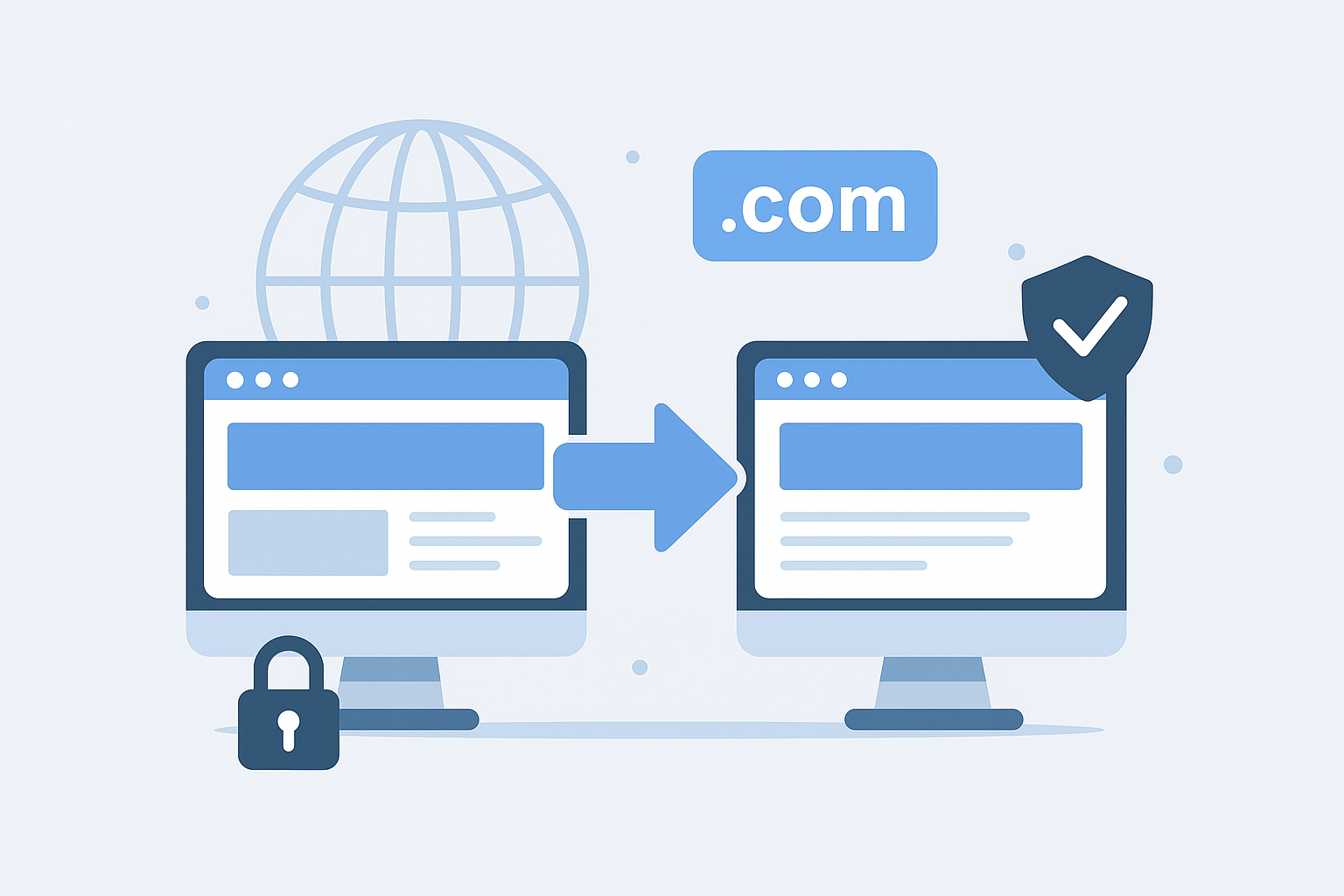Introduction: What Is a Single Site Task Fix?
Running a website means dealing with all kinds of issues—from minor bugs and design glitches to serious security threats. But not every problem requires a full-scale overhaul. That’s where a Single Site Task Fix comes in.
A Single Site Task Fix is a one-time, focused service that resolves a specific issue on your website. Whether it’s fixing a broken plugin, cleaning up malware, repairing your contact form, or restoring your site after a crash, this service delivers quick, professional results without the need for long-term contracts.
At FixHackedSite, we specialize in these quick-response solutions—perfect for businesses that need immediate help with a one-off issue.
Why You Might Need a Single Site Task Fix
Not every website problem is ongoing. Sometimes, you just need a one-time expert to step in, fix it, and move on. Here are some common scenarios where a Single Site Task Fix is essential:
- Website hacked or compromised
A hacked website can result in unauthorized access, spam content injection, redirections, or stolen data. Hackers may exploit vulnerabilities in your CMS, plugins, or hosting environment. Immediate action is needed to identify the breach, remove malicious code, and secure the site to prevent further damage or blacklisting.
- Malware injected into files or databases
Malicious code can be secretly embedded in your site’s core files, themes, plugins, or even database entries. This may include redirect scripts, backdoors, or phishing pages. Malware can cause search engines to flag your site or spread infections to your users. Removal involves deep scanning and cleaning of both code and database.
- Broken themes, styles, or layout issues
After updates or file changes, your site’s visual layout may break—causing missing headers, misaligned elements, or blank sections. This often results from incompatible theme versions, missing files, or outdated CSS/JavaScript. Fixing it includes restoring backups, debugging the code, and applying responsive design principles.
- Contact forms not sending emails
If your contact form isn’t delivering messages, it could be due to SMTP misconfiguration, server limitations, or plugin conflicts. This affects user communication and lead generation. The fix involves configuring the correct mail transport layer (e.g., SMTP or API) and testing email delivery end-to-end.
- CMS login issues or password recovery
If you’re locked out of the admin panel or password reset isn’t working, it may be due to database errors, plugin interference, or file corruption. The fix may involve manually resetting passwords via the database, disabling problematic plugins, or restoring access through emergency admin creation.
- Plugins causing site errors or conflicts
Some plugins can conflict with each other or with your theme, causing 500 errors, white screens, or missing features. Troubleshooting includes deactivating plugins one-by-one, checking error logs, and updating or replacing the faulty plugin to restore site functionality without compromising performance.
- Site going offline after an update
CMS or plugin updates can sometimes break your site due to incompatibility or failed installations. This might result in a completely down site or partially loading pages. A common fix includes restoring from backups, clearing cache, or rolling back the problematic update while ensuring future compatibility.
- Issues after website migration
Migrating from one host or domain to another may cause broken links, media errors, theme misalignments, or database connection issues. Proper migration includes updating URLs in the database, fixing path conflicts, and ensuring SSL certificates and DNS records are correctly set up.
- Hosting configuration errors
Wrong server configurations (e.g., .htaccess errors, PHP version issues, or permission problems) can prevent your website from functioning correctly. Fixes may involve editing configuration files, adjusting file permissions, or updating hosting settings like PHP limits or database connections.
- Mobile responsiveness issues
If your site doesn’t display correctly on mobile devices, it can affect user experience and SEO rankings. Common causes include fixed-width layouts, missing meta viewport tags, or non-responsive elements. Fixing involves applying mobile-first CSS, using flexible grids, and testing across different screen sizes.
These one-time issues can cause serious downtime, traffic loss, or poor user experience if not resolved immediately.
The Importance of Fast Fixes for Website Health
Time is everything when your website goes down. Every second offline can mean lost visitors, lost sales, and lost trust.
Here’s why a fast single task fix matters:
- Protects your SEO: Broken sites lose rankings fast.
Search engines like Google continuously crawl your website to assess content and structure. If your site is broken, defaced, or infected, it may:
- Return error codes (like 404 or 500),
- Display malware warnings to visitors,
- Contain injected spam content or redirects.
These factors lead to rapid SEO deterioration, including loss of page indexing, drop in search rankings, and even blacklisting. Timely fixes ensure your site remains compliant with SEO best practices and maintains visibility in search results.
- Improves user experience: A functioning website builds trust.
 A slow, broken, or unresponsive website frustrates users and increases bounce rates. Common issues like:
A slow, broken, or unresponsive website frustrates users and increases bounce rates. Common issues like:
- Broken contact forms,
- Layout glitches on mobile,
- Pages not loading properly, can damage your credibility and drive potential customers away.
Fixing these problems promptly ensures a smooth, seamless, and professional experience, which builds trust and encourages users to take desired actions like purchases or sign-ups.
- Maintains security: Unfixed vulnerabilities invite hackers.
Outdated plugins, misconfigured servers, or lingering malware can leave your website open to exploitation. Hackers actively scan for such weaknesses and use them to:
- Inject malware,
- Create backdoors for future access,
- Steal user or customer data.
Fixing vulnerabilities as soon as they appear reduces the attack surface and keeps your website, data, and users safe from evolving threats.
- Avoids business loss: Every minute of downtime = lost revenue.
A non-functional site means customers can’t:
- Browse your products or services,
- Submit inquiries,
- Complete purchases.
This directly translates to lost sales, missed leads, and a damaged reputation. Especially for e-commerce or service-based websites, downtime has a measurable financial impact. Rapid issue resolution ensures your business stays online, operational, and profitable.
Quick resolutions are not a luxury—they are a business necessity.
Common Types of Single Site Tasks We Fix
At FixHackedSite, we’ve handled thousands of one-off issues. Below are some of the most common single task fixes we offer:
Security Fixes
- Malware removal
Malware removal involves scanning your entire website—including files, databases, and server directories—for malicious code, infected scripts, and suspicious activity. Once identified, the harmful elements are carefully removed without affecting the functionality or appearance of your site. This process also includes securing potential entry points to prevent future infections.
- Brute force attack protection
Brute force attack protection is designed to shield your website from repeated unauthorized login attempts. This is done by limiting login retries, implementing CAPTCHA challenges, blocking suspicious IP addresses, and enforcing strong password policies. These protective measures help reduce the risk of attackers gaining access through password-guessing techniques.
- .htaccess and wp-config repair
.htaccess and wp-config repair focuses on restoring and securing two of the most critical files in a WordPress installation. The .htaccess file controls server-level configurations such as redirects and access restrictions, while the wp-config.php file holds your database credentials and important security settings. Repairing these files involves cleaning malicious code, correcting misconfigurations, and reinforcing security rules to ensure stable and safe site operation.
Functionality Fixes
- 404 errors and broken links
404 errors and broken links occur when a user tries to access a page that no longer exists or has been moved without proper redirection. These issues not only frustrate visitors but also hurt your website’s SEO rankings. Fixing 404 errors involves identifying all non-functional URLs and setting up proper redirects or restoring missing content, ensuring a seamless user experience and preserving your site’s credibility.
- Plugin conflicts
Plugin conflicts happen when two or more WordPress plugins don’t work well together, often causing features to break, pages to crash, or the entire site to go offline. Resolving these conflicts requires careful diagnosis—disabling, testing, and updating each plugin while ensuring compatibility with your WordPress theme and core files. Once identified, the conflicting plugins are either replaced or reconfigured to restore site stability.
- Image upload errors
Image upload errors prevent you from uploading media files through the WordPress dashboard. These can be caused by incorrect file permissions, server limitations, plugin issues, or corrupted files. Fixing this problem includes checking folder permissions, adjusting PHP settings, disabling interfering plugins, and ensuring the image files meet WordPress requirements—so you can smoothly upload and manage your visuals.
Design and UI Fixes
- Broken menus or layout shifts
Broken menus or layout shifts refer to navigation bars or page structures that appear misaligned, overlapping, or unresponsive, especially after theme or plugin updates. These issues can disrupt the user experience, making it difficult for visitors to navigate your site. Fixing them involves inspecting the site’s HTML and CSS, correcting structural code, and ensuring compatibility across all screen sizes and browsers.
- CSS issues across devices
CSS issues across devices occur when your website looks fine on a desktop but breaks or behaves unpredictably on mobile or tablet devices. This can include misaligned elements, overlapping content, or hidden buttons. Resolving these issues requires responsive CSS fixes using media queries, flexible layout techniques, and rigorous cross-device testing to ensure a consistent appearance everywhere.
- Missing icons or fonts
Missing icons or fonts typically happen when icon libraries (like Font Awesome) or custom fonts fail to load due to incorrect paths, CDN issues, or blocked resources. This results in blank spaces or strange characters in place of icons or text. Fixing this involves checking your theme’s font and icon configuration, ensuring proper file paths or CDN links, and enabling font loading permissions via your .htaccess or CSP (Content Security Policy) settings.
Performance Fixes
- Speed optimization for one page
Speed optimization for one page focuses on enhancing the load time and performance of a specific web page, often a homepage, product page, or landing page. This includes minimizing CSS and JavaScript files, compressing images, removing unnecessary code, and enabling lazy loading for media. The goal is to ensure fast loading speeds, which improves user experience, reduces bounce rates, and boosts search engine rankings.
- Cache and script errors
Cache and script errors occur when outdated or conflicting cached data or JavaScript files disrupt how your website functions or appears. This might lead to broken features, incomplete loading, or layout inconsistencies. Fixing these issues involves clearing or configuring your site’s cache settings (browser, plugin, or server-side) and debugging scripts to resolve conflicts and ensure smooth execution.
- Hosting misconfigurations
Hosting misconfigurations refer to incorrect settings or limits on your web hosting server that affect site performance, availability, or security. Examples include wrong PHP versions, low memory limits, improper file permissions, or timeout settings. Addressing these misconfigurations involves reviewing your hosting environment, updating settings in the control panel or server files, and ensuring it aligns with your website’s technical requirements for optimal performance.
CMS and Plugin Support
- WordPress login errors
WordPress login errors prevent you or your users from accessing the admin dashboard. These issues can arise from a variety of causes and may lock you out of the site entirely.
Common causes include:
- Incorrect username or password.
- Corrupted .htaccess file or database.
- Conflicts from security plugins that limit login access.
- Cookie or cache problems.
- WordPress URL mismatch in settings.
- Brute force attack lockouts (IP blocked).
Symptoms:
- Redirect loop when trying to log in.
- White screen or “404 Not Found” on the login page.
- “Error: Cookies are blocked or not supported by your browser.”
- “Invalid username/password” even when correct.
Fixing involves:
- Resetting the password via phpMyAdmin or FTP.
- Disabling plugins/themes temporarily through file manager.
- Correcting site URL settings in the database.
- Regenerating the .htaccess file.
- Clearing browser cache and cookies.
Resolving login errors restores access to your site’s backend and prevents unnecessary downtime or lost productivity.
- Plugin installation/failure
Plugin installation failures happen when you attempt to install or activate a plugin, but the process doesn’t complete correctly or the plugin doesn’t function as expected.
Causes include:
- Incompatible plugin versions with your WordPress or PHP version.
- Server restrictions (e.g., max upload size or execution time).
- Corrupted or incomplete plugin files.
- Conflicts with existing themes or other plugins.
- File permission errors preventing extraction or activation.
Typical error messages:
- “Installation failed: Could not create directory.”
- “Plugin could not be activated because it triggered a fatal error.”
- White screen after activation (WSOD).
Fixing involves:
- Installing plugins via FTP instead of the dashboard.
- Increasing memory limits and file upload sizes in php.ini.
- Checking plugin compatibility with your WP version.
- Reviewing server logs for errors.
- Replacing faulty plugins with better-supported alternatives.
Solving plugin failures ensures you can extend your site’s functionality safely and smoothly.
- Shortcode malfunctions
Shortcodes are small snippets of code used in WordPress to display dynamic content (like forms, galleries, or sliders). When shortcodes malfunction, they may appear as plain text or fail to render the intended functionality.
Causes of shortcode issues:
- Plugin or theme that provides the shortcode is deactivated or missing.
- Improper shortcode syntax (missing brackets, attributes, etc.).
- Conflicts between shortcode-generating plugins.
- Theme not supporting the shortcode output correctly.
- Caching plugins serving outdated or broken content.
Examples of shortcode malfunctions:
- .[] displaying as text instead of images..
- .[contact-form-7 id=”123″] showing nothing or throwing an error..
- .Shortcode content not styled or breaking page layout..
Fixing involves:
- Verifying that the plugin or theme providing the shortcode is active.
- Reviewing the shortcode syntax for errors.
- Testing shortcode output on a different page or post.
- Disabling conflicting plugins temporarily.
- Clearing site and browser cache.
Fixing shortcode problems ensures your dynamic content displays correctly, maintaining both functionality and visual consistency.
Whatever your site’s pain point is, we offer a quick, surgical solution.
What to Expect from a Professional Site Task Fix Service
A professional Single Site Task Fix service should follow a structured, results-driven process.
Here’s what to expect:
- Quick Diagnosis – Identifying the problem with scans or manual inspection.
The first step in resolving any website issue is a quick yet thorough diagnosis. This involves using automated malware scanners, error log reviews, and manual file inspections to pinpoint the exact problem. Whether it’s a hidden malware script, a broken plugin, or a theme conflict, identifying the root cause quickly helps reduce downtime and avoid unnecessary fixes.
- Safe Access – Secure login or staging setup to prevent live site damage.
To protect the integrity of the live website, technicians often use secure methods of access, such as two-factor authentication, temporary credentials, or IP whitelisting. In more sensitive cases, a staging environment (a clone of your website) is created where fixes can be tested before going live. This ensures that users don’t experience interruptions or data loss during the repair process.
- Clean Fix – Implementing a precise and tested solution.
 Once the issue is identified, the next step is applying a clean, targeted solution. This could involve removing malicious code, restoring clean files from backup, reinstalling corrupt plugins, or adjusting configurations. The focus is on applying minimal changes to avoid unnecessary disruption, while ensuring the underlying issue is fully resolved.
Once the issue is identified, the next step is applying a clean, targeted solution. This could involve removing malicious code, restoring clean files from backup, reinstalling corrupt plugins, or adjusting configurations. The focus is on applying minimal changes to avoid unnecessary disruption, while ensuring the underlying issue is fully resolved.
- Security Checks – Making sure the fix doesn’t expose new vulnerabilities.
After the main issue is fixed, it’s crucial to perform security checks to verify that no new vulnerabilities were introduced. This includes running vulnerability scans, checking file and folder permissions, validating SSL configurations, and ensuring that user roles and access levels are appropriately set. These checks help future-proof the website against repeat attacks or issues.
- Post-Fix Report – Documentation of what was done and how.
Transparency matters. A Post-Fix Report provides a clear summary of the work completed, including the identified issue, steps taken to resolve it, and security improvements made. This report can serve as a valuable reference for future incidents and gives the website owner full visibility and confidence in the fix.
- Testing and Verification – Ensuring the issue is fully resolved.
Finally, rigorous testing is performed to verify that the fix was successful and the website is working properly. This includes checking for broken functionality, page load issues, form submissions, checkout processes, and responsive design on different devices. Testing ensures that both users and search engines can interact with the site without encountering errors or delays.
You shouldn’t be left guessing what happened or if it worked—clear communication is key.
The FixHackedSite Approach to Single Task Resolution
At FixHackedSite, we’re not just about speed—we’re about precision, safety, and transparency.
Our 6-Step Methodology:
- Client Consultation – We collect details, symptoms, and credentials.
The process begins with a direct consultation with the client to understand the symptoms, error messages, or any unusual behavior they’ve observed. We also request secure login credentials and hosting details if necessary. This stage ensures we gather all relevant context before starting technical work, helping us tailor our investigation and response precisely to the client’s situation.
- Threat and Issue Assessment – Automated scans + manual inspection.
After collecting client input, we run automated security and malware scans using advanced tools to identify known threats. In parallel, we perform a manual inspection of key files, database entries, and CMS settings. This dual approach allows us to catch both surface-level issues and deeply hidden problems, ensuring nothing is missed in our assessment.
- Backup and Protection – We always back up before touching code or files.
Before making any changes, we create a complete backup of your website files and database. This safety step protects you against data loss or downtime in case something goes wrong during the fix. We also implement temporary security measures such as disabling suspicious plugins or limiting access to minimize further damage while we work.
- Clean Fix Implementation – We address the root cause, not just symptoms.
Once the issue is identified, we focus on a precise and clean fix—resolving the root cause rather than applying a temporary patch. This might include removing injected malware, correcting faulty code, updating or replacing compromised plugins, or hardening configurations. The goal is to restore functionality while enhancing long-term stability and security.
- Testing Across Devices – We test the fix on desktop, mobile, and major browsers.
After fixing the issue, we thoroughly test the website’s performance and design across multiple devices (desktop, tablet, mobile) and major browsers (Chrome, Firefox, Safari, Edge). This ensures consistent user experience and functionality for all visitors, regardless of how they access your site.
- Aftercare & Support – We stay available for follow-up questions or rechecks.
Our job doesn’t end after the fix. We offer aftercare support to answer any client questions, assist with minor follow-up adjustments, or perform rechecks if needed. Whether it’s clarifying what was done, ensuring your site stays protected, or offering recommendations for future improvements, we’re here to help even after the issue is resolved.
We treat every single task fix like it’s mission-critical—because for you, it is.
How Long Does a Single Site Fix Take?
While every task is unique, most Single Site Task Fixes are resolved within:
- 1–3 hours for minor issues (contact form not working, CSS tweaks)
Minor website issues such as a broken contact form, alignment problems, color mismatches, or small CSS layout bugs typically fall under the 1–3 hour resolution window. These are surface-level problems that don’t require deep digging into the codebase or server and can often be fixed by adjusting settings, updating shortcodes, or adding a few lines of CSS. We aim to diagnose and resolve these quickly to minimize disruptions.
- 3–6 hours for malware cleanup or plugin conflicts
Moderate issues—like malware infections, unauthorized redirects, or conflicts between plugins—usually take between 3 to 6 hours to resolve. These tasks require more than just surface-level fixes; they involve manual scanning, file-level inspection, cleaning malicious code, and testing plugin compatibility. Once cleaned, we secure the site and often recommend further hardening steps to prevent recurrence.
- 6–12 hours for more complex issues like database errors or partial outages
Serious issues such as database corruption, PHP errors, partial site outages, or internal server errors (500) may require 6 to 12 hours for complete diagnosis and repair. These problems often involve working directly with the database, server logs, and core CMS files, and may include restoring from backups or rebuilding portions of the site. These fixes are handled with extra care to prevent data loss and ensure full recovery.
- 24 hours max for emergency fixes with high complexity
High-priority, mission-critical emergencies—such as a fully compromised website, severe malware infection, or total website failure—are treated with urgency. Our team works around the clock if needed to restore the site within 24 hours or less, depending on the complexity. These fixes may involve full security sweeps, server-level adjustments, theme and plugin reconfiguration, and comprehensive testing to bring the site back safely and securely.
Note: We offer priority emergency services for businesses with urgent needs.
The goal is always to get your site back to 100% functionality—fast.
What We Need From You to Start the Fix
To begin a single site task, we usually require:
- Admin access to your CMS (WordPress, Joomla, Magento, etc.)
To begin troubleshooting and applying any fixes, we require administrator-level access to your website’s Content Management System (CMS). Whether you’re using WordPress, Joomla, Magento, or another platform, admin access allows us to view settings, manage plugins, access themes, and monitor any suspicious activity. This is the core entry point for diagnosing site-level issues or deploying repairs.
- FTP or cPanel access
For deeper issues such as malware infections, server errors, or file-level corruption, we need FTP or cPanel access. FTP lets us directly view, edit, or delete files on your web server, while cPanel provides access to essential tools like the file manager, database editor (phpMyAdmin), email settings, and error logs. These access points are critical when CMS access alone is not enough to fix the problem thoroughly.
- Clear description of the issue
A detailed explanation of what you’re experiencing helps us prioritize and focus our investigation. For example, knowing that “the homepage is redirecting to a strange URL” or “checkout isn’t working on mobile” gives us key context. The clearer the description, the faster we can replicate, identify, and resolve the issue—saving both time and cost.
- Screenshots or links showing the problem
Visual evidence such as screenshots, screen recordings, or direct URLs pointing to the issue can drastically speed up troubleshooting. A picture or a link showing the exact error (e.g., a 404 page, broken layout, or JavaScript console message) provides immediate insight into what’s happening. These are especially helpful for browser-specific or device-specific bugs that we may not immediately see ourselves.
- Hosting provider info (if server-related)
In cases where the issue is related to server configuration, DNS settings, SSL certificates, or firewall rules, we may need to contact or access your hosting provider’s control panel. Knowing your hosting provider (e.g., SiteGround, GoDaddy, Bluehost, Hostinger, etc.) allows us to navigate their specific support systems or backend tools efficiently. This helps resolve server-side problems faster and more securely.
The more accurate the details you give us, the faster we can fix the issue.
Risks of DIY Fixes or Ignoring Website Errors
Many website owners try to solve issues themselves, often by watching tutorials or applying random code snippets. This is risky and can:
- Break the site further
Attempting a fix without proper knowledge or tools can unintentionally cause more damage to the site. For example, editing the wrong theme or plugin file, disabling a critical plugin, or misconfiguring server settings may result in a completely broken layout, non-functional pages, or even a site that doesn’t load at all. What starts as a minor issue can quickly become a major outage if not handled carefully.
- Introduce new security vulnerabilities
Poorly applied fixes can leave your site exposed to future cyberattacks. For example, restoring an outdated backup, using nulled plugins, or incorrectly modifying core files may bypass built-in protections and create backdoors for hackers. These security holes often go unnoticed until the site is compromised again, leading to repeat infections or defacements.
- Cause data loss or corrupt the database
Inexperienced handling of website files or the database can result in accidental data deletion or irreversible corruption. Whether it’s a wrongly applied SQL query, deletion of user records, or overwriting vital configuration files, these errors can wipe out customer information, orders, blog posts, or even your entire website. Without a proper backup system and rollback plan, recovery can be extremely difficult—or impossible.
- Lead to blacklisting from search engines
 If malware or spam links remain on your site due to an incomplete fix, your domain may get blacklisted by Google and other search engines. This leads to warnings like “This site may be hacked” in search results and drops your SEO rankings dramatically. Blacklisting can destroy your online credibility and cut off traffic, even after the issue is resolved—making timely, thorough cleanup absolutely essential.
If malware or spam links remain on your site due to an incomplete fix, your domain may get blacklisted by Google and other search engines. This leads to warnings like “This site may be hacked” in search results and drops your SEO rankings dramatically. Blacklisting can destroy your online credibility and cut off traffic, even after the issue is resolved—making timely, thorough cleanup absolutely essential.
Similarly, ignoring a site error can result in:
- Poor user experience
When a website has broken features—like non-functional contact forms, slow page loading, layout issues, or mobile incompatibility—users become frustrated quickly. A poor user experience leads to higher bounce rates, reduced engagement, and lower trust in your brand. Even a few seconds of lag or a confusing interface can push visitors away and give the impression that your site is unprofessional or unsafe.
- SEO penalties
Search engines like Google prioritize secure, fast, and fully functional websites. If your site has issues such as malware, broken links, slow performance, or blocked content, you may suffer SEO penalties, including loss of rankings or even deindexing from search results. This reduces your visibility online and directly impacts your organic traffic and potential sales.
- Lost customers
Every broken page, error message, or redirect can turn potential customers away. Whether it’s an e-commerce checkout failure, missing content, or unclickable call-to-action buttons, users are less likely to return after a bad experience. This leads to lost sales, missed leads, and damage to your reputation—especially if your competitors offer smoother, more reliable alternatives.
- Server overload or crashes
Unresolved technical issues like malicious scripts, unoptimized code, or endless redirect loops can put unnecessary strain on your web server. This can result in slowdowns, server timeouts, or complete site crashes—especially during traffic spikes. In severe cases, these problems may even trigger host suspensions, making your website entirely inaccessible until the issue is resolved.
- Exploitable security loopholes
If your site has outdated plugins, improper permissions, misconfigured settings, or leftover malware, you’re leaving the door wide open for attackers. Hackers actively scan for such vulnerabilities to inject spam, steal customer data, or deface websites. These loopholes can be silently exploited over time, causing damage that may not be detected until it’s too late—unless proactively fixed and secured.
If you’re not sure what you’re doing, it’s best to let professionals handle it.
Cost of a Single Site Task Fix
One of the best things about Single Site Task Fixes is their affordability and transparency.
Typical Pricing Range:
- Basic Fix – £30 to £60 (CSS errors, plugin conflicts)
This tier covers quick and straightforward fixes that typically take 1–3 hours to complete. Tasks include CSS styling issues, alignment problems, font inconsistencies, and minor plugin conflicts that break layout or functionality. These problems usually don’t require server access and can be resolved through the admin dashboard or basic code adjustments.
Perfect for:
- Broken styling or layout
- Header/footer display issues
- Minor plugin compatibility errors
- Simple visual tweaks
- Moderate Fix – £60 to £120 (form issues, mobile display problems)
Moderate fixes require more time and deeper troubleshooting, usually taking 3–6 hours. This includes issues like contact forms not sending emails, mobile responsiveness problems, JavaScript glitches, or slow-loading pages caused by plugin inefficiencies. These fixes may involve working with form builders, responsive frameworks, and sometimes adjusting third-party integrations.
Ideal for:
- Broken contact or quote forms
- Inconsistent mobile/tablet display
- Button or slider malfunctions
- Page builder issues (like Elementor or WPBakery)
- Advanced Fix – £120 to £200 (malware removal, server errors, code corruption)
This level covers complex, critical issues that may take 6 to 12 hours or more to fix. It includes malware or hack cleanup, database errors, 500/internal server errors, script injection, or corrupt theme or plugin code. These jobs require FTP/cPanel access, manual code repairs, and extensive testing across browsers and devices.
Best for:
- Site infected with malware or redirects
- White screen of death or critical WordPress errors
- Broken site after update or migration
- Theme/core code corruption
- Server configuration issues
At FixHackedSite, we offer flat-rate pricing, so you always know what you’re paying. No hidden fees. No surprises.
Invest in a quick fix today to prevent expensive problems tomorrow.
Final Thoughts: Fix It Once, Fix It Right
Website issues don’t have to be overwhelming. A fast, professional Single Site Task Fix can solve your problem and restore your site’s functionality within hours—not days.
Why choose FixHackedSite?
- UK-based experts
Our team consists of skilled professionals based in the UK, with hands-on experience in handling a wide range of website issues — from simple plugin errors to complex server attacks. Being locally based ensures we understand the expectations of UK businesses and can provide reliable, responsive, and timezone-aligned support. You’ll never have to deal with overseas delays or communication gaps.
- Fast turnaround
We pride ourselves on our speed and efficiency. Depending on the complexity, most issues are resolved within 1 to 24 hours. We don’t keep your business waiting — once we have the required access, we get to work immediately, reducing downtime, revenue loss, and frustration. Our goal is to get your website back to normal as quickly as possible, without compromising quality.
- Transparent pricing
No hidden fees. No surprise charges. With our clear and upfront pricing structure, you know exactly what you’re paying for. Whether it’s a basic CSS fix or an advanced malware removal, we provide a price estimate before starting the work — and we stick to it. That’s our promise of honesty and professionalism.
- Zero risk to your data
We always take a full site and database backup before making any changes. Your data is handled securely, and we follow best practices to ensure nothing is lost or damaged during the fix. Whether it’s customer information, blog posts, or e-commerce orders — your digital assets are safe and protected throughout the process.
- Post-fix support included
Our job doesn’t stop when the issue is resolved. We offer complimentary post-fix support to ensure everything remains stable after deployment. If something unexpected comes up related to the fix, we’ll address it promptly. You also receive a post-fix report with details of what was done, plus recommendations to keep your site secure going forward.
We don’t just fix the problem—we prevent it from happening again.
Need a fix right now? Reach out to FixHackedSite and let us handle it for you.
✅ Contact Us Today
• Website: www.fixhackedsite.com
• Email:
[email protected]



